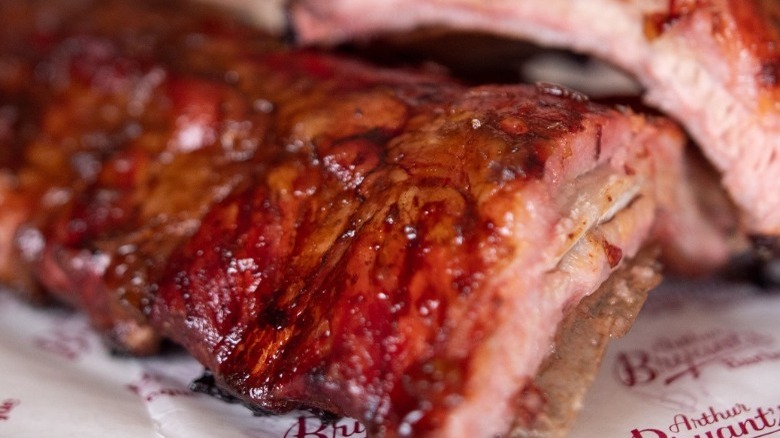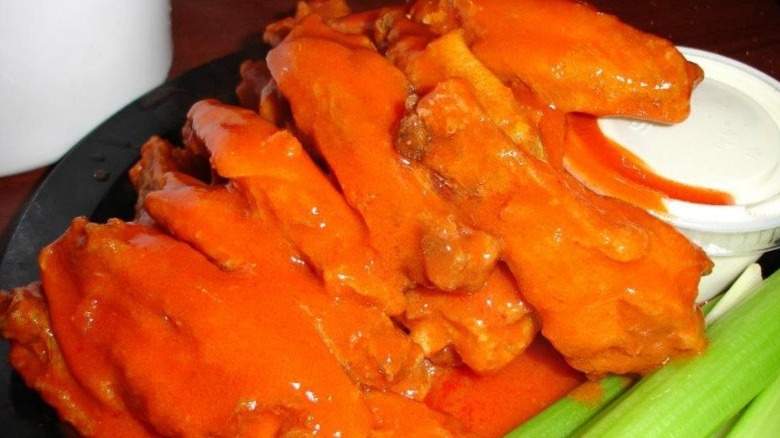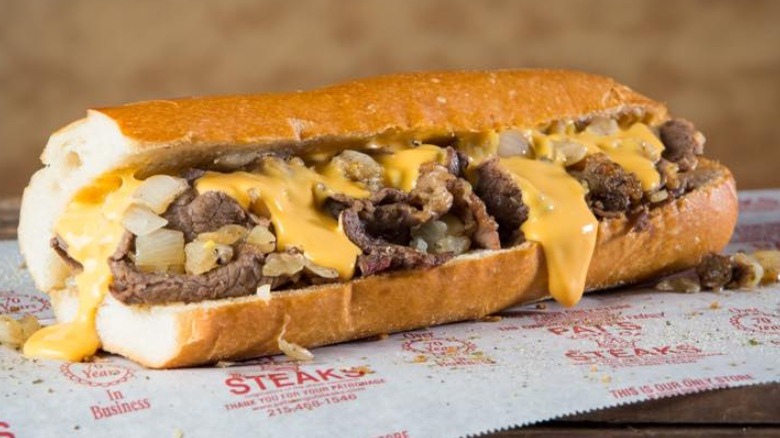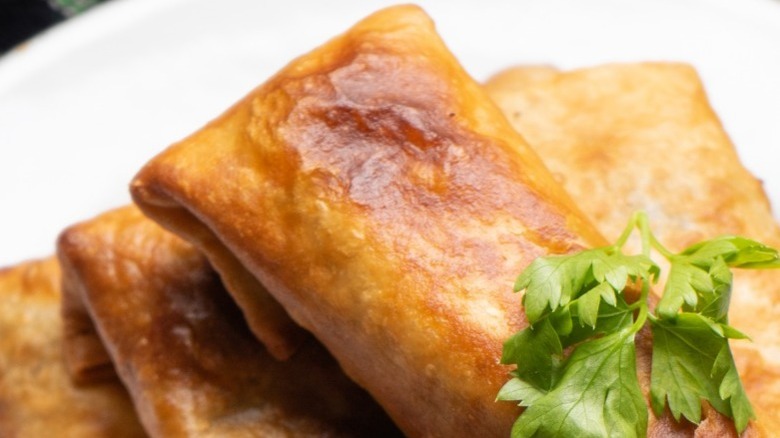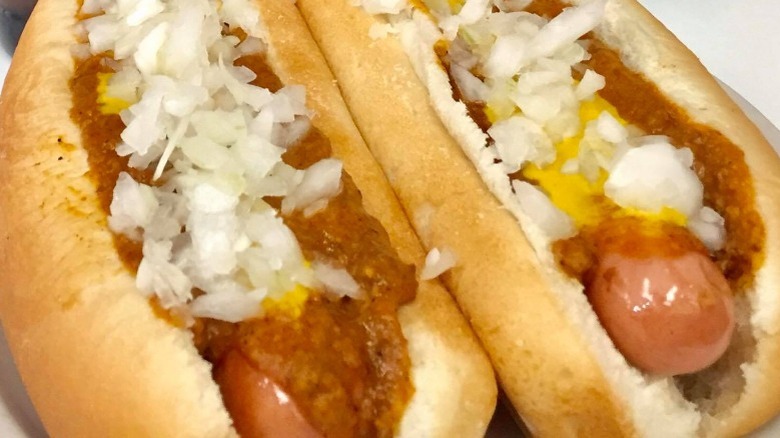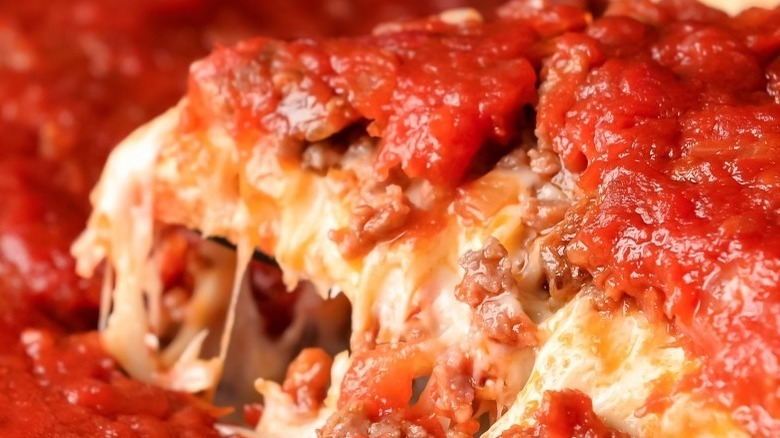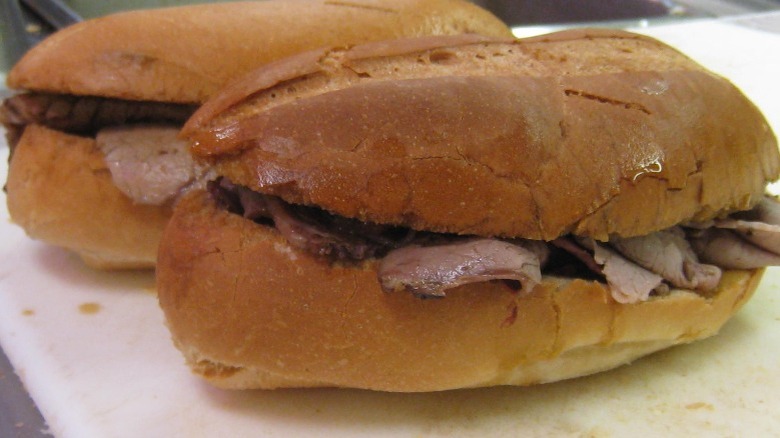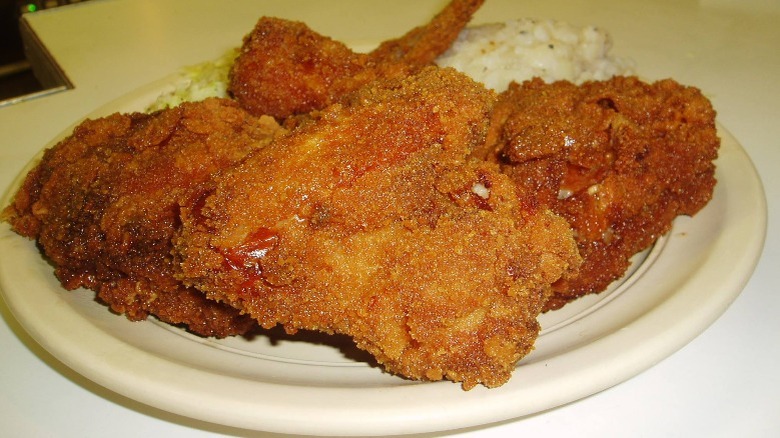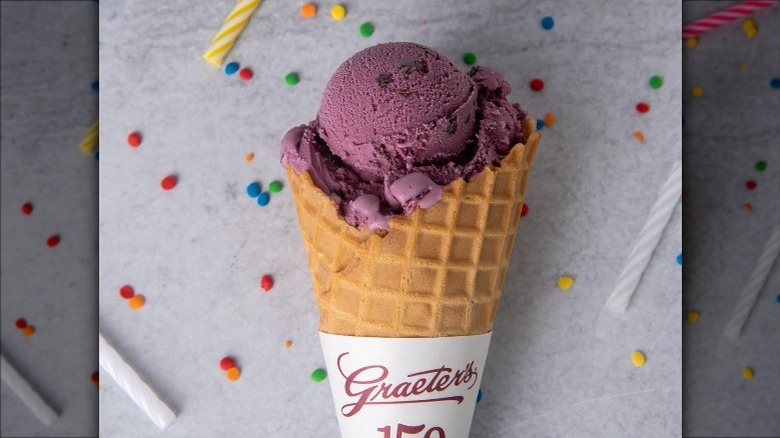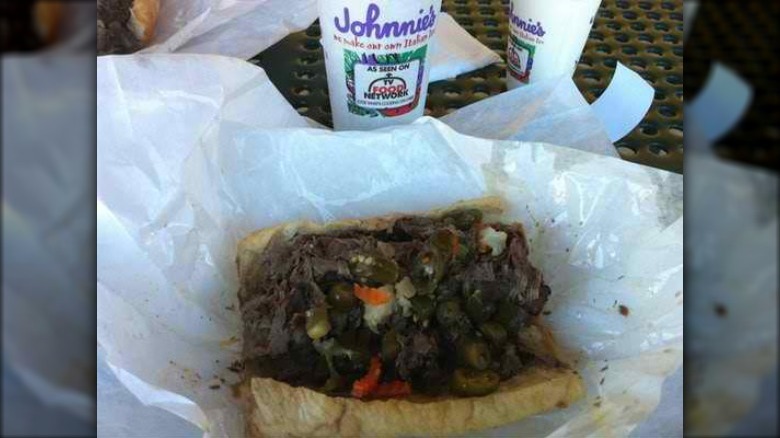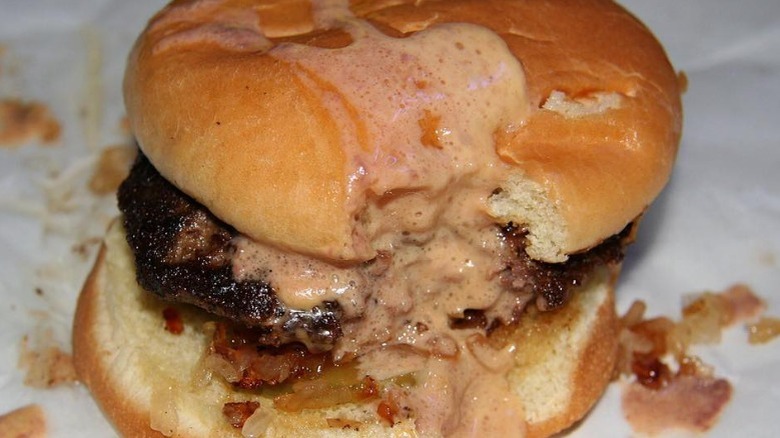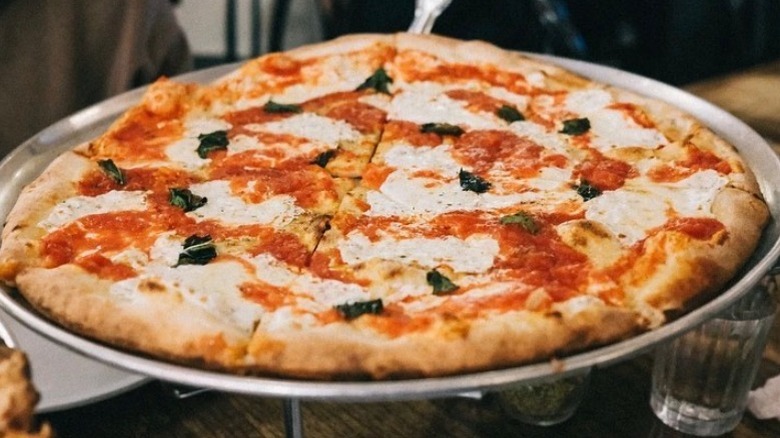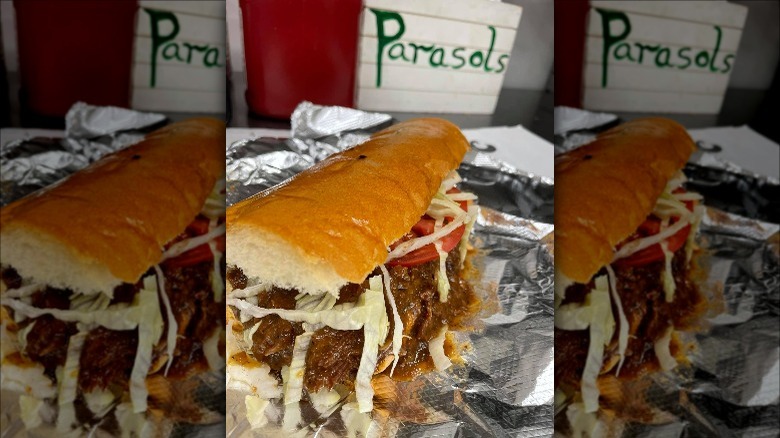These Are The Top US Restaurant Rivalries
While some may dismiss American cuisine as generic fast food, the truth about our national culinary scene is that every region has its own distinctive specialties. All of them are must-tries for any visitor, and many are worth making a special road trip to experience. While we all want to try the finest example of each regional food, the problem comes when even the locals cannot agree on who makes the best of the best.
Problem? No, let's rephrase that as "opportunity" instead! After all, if you're visiting Philadelphia to eat cheesesteak, you really ought to experience both Pat's and Geno's. Ditto for deep-dish pizza in Chicago — why take anyone's word on the great Lou Malnati's vs. Giordano's debate when you can try both and make up your mind for yourself? After all, it's not like we're trying to determine who's serving up the best gold-encrusted Kobe beef with Dom Pérignon pan sauce. All of the restaurants on this list are not only iconic but affordable, which makes them our favorite kind of eatery.
Barbecue: Arthur Bryant's Barbeque and Gates Bar-B-Q
Barbecue battles tend to center around which regional style is best, with Texas, North Carolina, Memphis, and Kansas City among the main contenders. We're not going to get into that particular debate right now. Instead, we'll focus on which barbecue joint makes the very best 'cue. Kansas City is home to numerous near-legendary barbecue restaurants, but the two most famous must surely be Arthur Bryant's Barbeque and Gates Bar-B-Q. (Another up-for-debate aspect of this all-American cuisine is how to spell the name, as you can see from the variants in the preceding sentences.)
Of the two rivals, Bryant's wins points for longevity since their 'cue dates back to 1908, while Gates was established in 1946. The two have been friendly rivals for nearly 80 years, but in 2010, they slugged it out on Travel Channel's "Food Wars," and Bryant's was declared the winner. Food writer Calvin Trillin no doubt approved of the choice. Back in 1972, he'd written a piece in "Playboy" (reprinted on the Full Custom BBQ Gospel blog) proclaiming Bryant's the "single best restaurant in the world." As for how the two stack up today, they're still running neck and neck. Bryant's has a 4.0 Trip Advisor rating and is rated the No. 51 restaurant in town, while Gates, still playing Avis to their Hertz, also has a 4.0 rating and comes in at No. 113.
Buffalo Wings: Anchor Bar vs. Duff's
If you're a true Buffalo wing aficionado, then you most likely know that the dish was created at the Anchor Bar in Buffalo, New York. While it took a few decades until wings really took off (thanks in large part to Buffalo Wild Wings), they've been a regional favorite in the Buffalo area ever since they were invented, and Buffalo has no shortage of bars and restaurants that have been honing their wing craft for decades. One restaurant, in particular, that seems to be poised to steal away Anchor's "King of the Wings" crown is Duff's, a bar where the walls are covered with all of the awards they've won.
In 2010, Duff's earned yet another accolade: an upset victory over Anchor Bar on Travel Channel's "Food Wars" thanks to a single vote cast by a former Miss Buffalo Wing. Still, 2010 was a long time ago, so how are Buffalo's Wing Wars going in recent years? Duff's, it seems, is still ahead by a wingtip. In 2019, taste testers from Insider sampled wings from both establishments, as well as those from local contenders Gabriel's Gate and Bar-Bill Tavern, and once again declared Duff's to be the victor due to their extra-crispy wings and tangy sauce. As a Duff's employee (identified only as Joe) pointed out, Duff's is more of a hometown favorite, whereas Anchor Bar is seen as somewhat of a tourist trap.
Cannoli: Mike's Pastry vs. Modern Pastry Shop
While many regional specialties on this list were actually created in that area, that's not the case with cannoli. These delectable tube-shaped desserts come from Sicily and may date back over 1,000 years. The U.S., however, has been blessed with an abundance of Italian immigrants since the late 19th century, much to the benefit of our national cuisine. One place where the Italian influence is still very much in evidence is Boston's North End, home to numerous Italian restaurants and bakeries. While it's likely that most of them offer cannolis in some form or other, there are two bakeries that are particularly renowned for this dish.
Of the two, ironically, it's Modern Pastry Shop that is the older one — their business has been around for more than 90 years, while newcomer Mike's Pastry didn't open until 1946. Modern Pastry offers cannoli shells that are plain or chocolate-dipped along with a small selection of fillings, including traditional ricotta, whipped cream, chantilly cream, and chocolate or vanilla custard. Mike's, however, goes all-in on specialty flavors, including Nutella, amaretto, and espresso. Pratesi Living compared cannolis from both Mike's and Modern Pastry and found the latter to be clearly superior thanks to being freshly prepared, whereas Mike's cannolis came out of a glass case. They also noted that Mike's is more of a tourist attraction, but Bostonians apparently tend to prefer Modern's cannolis.
Cheese Steaks: Geno's Steaks vs. Pat's King of Steaks
One of the best-known of all food rivalries is the cheesesteak war that's gone on for decades between Philadelphia restaurants Geno's Steaks and Pat's King of Steaks. Philadelphia has no shortage of cheesesteakeries, and it seems as if each and every one of them is somebody's favorite — in fact, Guide to Philly grumbles that no "true Philadelphian" would nominate either Geno's or Pat's as the city's best. Still, the fact remains that Pat's and Geno's are the two big dogs of the Philly cheesesteak scene, so any visitors to the City of Brotherly Love are practically obligated to try both. Conveniently, they are located right across the street from each other and have been since Geno's was founded in 1966. (Pat's, the older of the two, dates back to 1930.)
As to which one is better, Pat's or Geno's, Guide to Philly points out that as long as you order sandwiches using similar ingredients, there's only one real difference. The bread is nearly identical, as are the cheese and condiments, but Pat's steak is shaved thin, while Geno's is chopped. They give the edge to Pat's due to the fact that the shaved steak stays tender, while the chopped beef tends to be a bit drier.
Chimichanga: El Charro Café vs. Macayo's
The chimichanga, while it can be found on the menu of many Mexican restaurants, is actually 100% American: It was invented in Tucson, Arizona. Or maybe in Phoenix. Definitely in Arizona, though. The New York Times says Phoenix-based Macayo's claims to have come up with the dish in 1946, while the Los Angeles Times reports that several different Tucson restaurants lay claim to the invention. Perhaps the most colorful origin tale is that of Tucson's El Charro Café, where at some point in the '40s or '50s, the owner was said to have accidentally dropped a burrito in boiling oil. Since children were around, she suppressed her originally intended obscenity and came up with the fake cuss word "chimichanga" instead. (Other folk etymologists suggest that the word is basically informal Spanish for "thingamajig" or something along those lines.)
We may never know for sure just who invented the chimichanga, or why, but a Denver Post reporter undertook the grueling task of trying both El Charro Café's and Macayo's versions. (Grueling only in that it's about a 2-hour drive between the two cities, so it's a bit more of a PITA than, say, comparing Pat's and Geno's sandwiches.) The verdict: Macayo's chimi is a bit more crispy, but El Charro's has a spicy tang to it. Both chimichangas are winners, and the long commute between the two will give you time to regain your appetite.
Coney Island Hot Dog: American Coney Island vs. Lafayette Coney Island
A Coney Island hot dog, confusingly enough, doesn't come from Coney Island, New York, which is the home of the annual Nathan's Famous hot dog eating contest. Instead, the Coney is a Detroit specialty consisting of a chili dog with raw onions and mustard. While the origins of this particular dog style are unknown, there are two undisputed masters of the art: American Coney Island and Lafayette Coney Island. Both restaurants not only share the same block but also the same family of origin. American Coney Island was established in 1917 by a Greek immigrant named Gus Keros, while Lafayette Coney Island was built right next door in 1924 by Gus' brother Bill. As of 100 years after its founding, the Keros family still owns American Coney Island, but Lafayette was sold to former employees a few decades back.
While the rivalry between the two stands isn't really all that bitter — both have dedicated customer bases that keep them pretty busy — they happily play up on it for the TV cameras. The general consensus seems to be that American is the more tourist-friendly of the two, although Lafayette may be making bank off its shabbier appearance since this is perceived as being more "authentic." As to the flavor of the respective chili dogs, Barstool Sports gives the nod to American, while the Detroit Moxie blog prefers Lafayette due to their heartier, spicier chili and thinner, crispier fries.
Deep Dish Pizza: Giordano's vs. Lou Malnati's
Chicago is a city with more than one signature dish to its name, including Chicago-style hot dogs and the less well-known but equally delicious Italian beef sandwiches. When it comes to epic food rivalries, however, perhaps the biggest of these revolves around what may be Chicago's best-known specialty: deep-dish pizza. Deep-dish pizza is, admittedly, not everyone's favorite kind, and in many other parts of the Midwest, thin crusts reign supreme. Still, when in the Windy City, you might as well try a slice of Chicago's iconic pan pizza. The problem is, no one can seem to agree on who does it best: Lou Malnati's, a long-established regional chain, or Giordano's, which is also a chain that's been around since the disco decade.
Insider compared both pizzas and found Giordano's version to be very cheesy and buttery but, on the whole, rather bland and boring. Also soggy. Lou Malnati's pizza, however, had a crunchier crust and far more flavorful toppings, thanks in part to their use of three different kinds of cheese instead of mozzarella alone. In fact, the reviewer, who had not been a fan of deep dish pizza at all, said that Lou Malnati's special made a convert out of them. Word to the wise: since deep-dish pizza is filling stuff, we still advocate for trying both Giordano's and Malnati's versions, but maybe do so on subsequent days.
French Dip Sandwich: Cole's vs. Philippe the Original
The French dip is a sandwich that is no more French than french fries — perhaps even less so, in fact, because fried potatoes (or pommes frites, if you prefer) are a pretty universal dish, whereas the French dip is native to Los Angeles. As to who actually invented it, not to mention when, why, and how ... thereby hangs a tale. The earliest purported date of origin is 1908, at which time a cook at Cole's Pacific Electric Buffet is alleged to have dropped the top half of a bread roll into some beef juice, a happy accident that pleased the sandwich-buying customer. A somewhat more recent claim comes from Philippe's, where a similar incident may or may not have happened in 1917 (or 1918) and possibly involved a fireman (or police officer).
When it comes to the French dip's disputed origins, Thrillist feels that Philippe's claim is slightly more plausible, even though their original dipped sandwich might have been made with — gasp! — roast pork instead of beef. If Philippe's invented the sandwich, this might also help to explain its name since Philippe Mathieu was French by birth. According to Los Angeles Magazine, Philippe's also has the superior sandwich. They sampled the French dips at both establishments and found Philippe's French dip to have better beef, bread, and au jus. Coles, however, does have more flavorful mustard, so there's that.
Fried Chicken: Chicken Annie's vs. Chicken Mary's
Fried chicken is a delicious but difficult-to-prepare dish that these days has seemingly been outsourced to fast food chains. Popeye's, KFC, et al., do turn out a decent product, but nothing compares to real, fried-on-the-bone chicken — even if you do have to journey into the heart of the Heartland to find it done just right. If you're planning a fried chicken road trip, set your GPS coordinates for Pittsburg, Kansas, a town that has just one claim to fame, or rather two: Chicken Annie's and Chicken Mary's. These two restaurants serve up the crispiest, juiciest chicken you've ever tasted.
Chicken Annie's has been in business just a bit longer as they got their start during the Great Depression, but Chicken Mary's opened in the early '40s. Amazingly enough, BBC Travel reports that both restaurants are still run by the same families, while a Chicken Annie's offshoot is run by both, as one of the Chicken Mary's clans married into the Annie's family — kind of like the Romeo and Juliet of fried chicken, only minus the hostility as the rivalry has never been anything other than a friendly one. When both restaurants appeared on Travel Channel's "Food Wars," Chicken Mary's was declared the winner, but Chicken Annie's co-owner Donna Lipoglav (via The Joplin Globe) dismissed the so-called war by saying, "If (Chicken Mary's) didn't have good food, they wouldn't have been there this long, and it's the same for us."
Ice Cream: Graeter's vs. Jeni's
Ice cream could hardly be claimed as any one region's specialty — frozen desserts have been around for centuries, while ice cream in its more-or-less modern form would have been known to our Founding Fathers (and mothers, who may have been the ones doing all the churning). Still, if there's one state that's known for its ice cream throwdown, that would be Ohio, where Columbus-based Jeni's Splendid Ice Creams has been slugging it out with Cincinnati's own Graeter's for the past two decades.
The Jeni's vs. Graeter's rivalry may be a generational thing. Graeter's, around since 1870, goes with more of an old-fashioned approach. Their signature flavor is black raspberry chocolate chip, while their selection doesn't extend to anything more radical than caramel macchiato or mango sorbet. Jeni's, on the other hand, was established in the 21st century (2002, to be specific) and seems to cater to a millennial clientele with hipsterrific flavors, including everything bagel, cold brew with coconut cream, and frosé sorbet. Jeni's does, however, have a famous fan from an older generation: President Joe Biden. The admiration goes both ways, as Jeni's created a special ice cream flavor to honor his inauguration. Graeter's, though, does get some Gen-Z love from Ohio State's student publication, The Lantern. Their reviewer feels that the venerable chain's high-quality ingredients, plus their mastery of the classic flavors, gives them the edge over trendy upstart Jeni's without the need for gimmicks like the latter's free cucumber water.
Italian Beef Sandwich: Al's #1 Italian Beef vs. Mr. Beef vs. Johnnie's Beef
Unlike the Chicago-style hot dog and Chicago deep-dish pizza, the Italian beef sandwich is a Windy City specialty that's not really all that well known outside the greater Chicago area. If you haven't had the pleasure, you may be wondering what goes into such a sandwich. As The Daily Meal explains, the Italian beef is a little like a Philly cheesesteak without the cheese, while it also resembles a French dip due to the au jus. The Italian beef sandwich has one distinguishing feature, though: Chicago-style hot giardiniera, a condiment that's considerably spicier (and oilier) than its Italian counterpart.
While Chicago has too many Italian beef stands to count, three names keep coming up whenever people argue about who's got the best beef. Mr. Beef and Al's #1 Beef were featured on Travel Channel's "Food Wars," and Mr. Beef was declared the winner — Daily Meal concurred, as they felt Al's sandwich was just too greasy. A few years later Alton Brown did a blind taste test comparing Al's to another contender, Johnnie's Beef, and he picked the latter of the two due to their spicier meat, thicker roll, and better peppers. Chicago's ABC-7 also chose Johnnie's as their top pick, noting that the establishment not only has a superior sandwich but they also make the best lemon ice in town. Their reviewer did say, however, that Mr. Beef came in a close second.
Juicy Lucy: 5-8 Club vs. Matt's Bar
The "Jucy Lucy," like the Italian beef, is a regional specialty that has yet to catch on outside the region, which is a shame as this inside-out cheeseburger is actually a pretty genius idea. It does, however, have a certain amount of what food writer Amy Thielen (via the Star Tribune) refers to as "an element of risk." As she explains the Juicy Lucy phenomenon, "Minnesotans love to go to a dark dive bar and eat ... something fun and something that will potentially burn your face."
Although both Matt's Bar and the 5-8 Club claim to have invented the cheese-stuffed burger, only Matt's really has much of a back story: They say it was created at the request of a customer in 1954, and when the customer happily bit into the burger's cheesy center, they allegedly exclaimed: "That's one Juicy Lucy!" The restaurant misspelled it on the menu, though, and the spelling error remains to this day, so Matt's can truthfully claim to be the home of the original "Jucy Lucy." While both Matt's and 5-8 have their fans, there's a notable difference between their Juicy (or Jucy) Lucies: Matt's sticks to the original version with nothing but American cheese inside the burger and caramelized onions and pickles on top. The 5-8 Club, however, offers their Lucy with a choice of cheeses (American, blue, pepper jack, Swiss) as well as variants like the Saucy Sally, PB&J, and Buffalo chicken.
New York Pizza: Grimaldi's vs. Juliana's
While pizza, as we know it today, does, in fact, come from Italy, the first American pizzeria opened in New York City. That was over 100 years ago, and pizza has come a long way since then, but many a New Yorker would still proclaim their city's pizza the best in the world. Ahh, but who makes the best pizza in New York? Now that's a debate that's been raging for decades. According to the Village Voice, one particularly heated rivalry is that between Grimaldi's and Juliana's. The backstory is a bit confusing — it seems that Grimaldi's used to be called Patsy's, but the name was changed after the death of the owner. The new owner was a nephew of the original Patsy Grimaldi and shared the same name. He later sold the restaurant to a new owner but came to regret the decision and opened a pizzeria right next door named Juliana's.
When the Village Voice reviewed the two pizzerias in 2013, they found Juliana's pizza to be much better than Grimaldi's. While they felt that Grimaldi's crust and cheese were adequate, the sauce, they said, lacked flavor. Juliana's pizza, however, had superior sauce, crisp yet chewy crust, and creamy, delirious cheese. Nearly a decade later, it seems Juliana's is still winning. They have a 4 ½ star rating on Trip Advisor and are rated the 9th best restaurant in Brooklyn, while Grimaldi's rates just 4 stars and comes in at No. 86.
Roast Beef Po'Boys: Parasol's vs. Tracey's
When we think of New Orleans cuisine, what dishes come to mind? Beignets, bananas Foster, and muffuletta sandwiches, plus Cajun and Creole classics like gumbo, jambalaya, and crawfish étouffée. One New Orleans specialty that's perhaps better known to natives than tourists, however, is the roast beef po'boy. Two of the restaurants best known for this type of sandwich are Parasol's Bar & Restaurant and Tracey's Bar & Restaurant, both located in the Irish Channel neighborhood. These restaurants actually have a history somewhat similar to the Grimaldi's/Juliana's saga in that the family who originally owned Parasol's sold it to new owners. In this case, it wasn't the owners but the couple who had been managing Parasol's for a dozen years who weren't happy with the new ownership, so they opened their own place — Tracey's — using Parasol's old recipes, equipment, and staff.
The Times-Picayune reviewed both restaurants in 2012 and picked the new-and-improved Parasol's as the winner of the po'boy war. They may still be winning today, as their 4 ½ star Trip Advisor rating beats Tracey's 3 ½ stars, but to be fair, both Parasol's and Tracey's roast beef sandwiches seem to be getting rave reviews. Guess that means the next time you're in the Big Easy, you'd really better try both.

